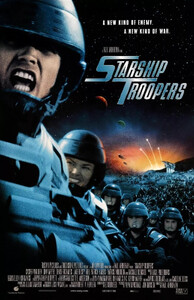Sculpt Like a Pro



TCNPhil has kindly written this article about sculpting. It's the first in a series! You can see some of the work he's done here.
If you're like me, and have seen , and been fascinated by small, detailed, museum quality figures and have a love of Wing Commander or any other PC games, then you're a natural fit for giving figure building a shot. Although a few popular game makers have been licensing figures from their products, most still aren't, and I'll bet that one or more of your favorites will provide you with a wealth of untapped subjects for the future. But, if you really are like me, and are not an artist by education or profession, you're going to have to take the ol' crawl - walk - run route. Which leads me to a couple of thing that you'll have to get for yourself before you ever step into the art or craft store to purchase your starter supplies.He's sent two more sample pieces of work: "Mekel, a member of an elite team of mercenaries with genetically enhanced mental powers (that I created for a story I've never finished), is based on a family friend named Michael, who's a psychology professor. Kohr, an alien merchant, is just a "sketch" that I made off of the top of my head, without a preliminary drawing, while I was being very bored watching t.v.."Figure building, like any other type of an art form, does take a smidgen of talent, but I'm finding that it really takes a lot more guts.....to try something that seems daunting at first glance. You cannot allow yourself, much like anything else in life, to say, "That's too tough for me", or, "I can't do that". If you do, you've failed before you can even get started, and your results will be predictably below what your talent could have ultimately achieved. My first efforts were really cruddy, as some of you may remember (Loaf), but I learn, or try to incorporate, something new every time I pick up the tools or brushes. But beware, unless you're a professional sculptor (and why would you be reading this), this is for fun and your own pleasure. Don't beat yourself up if your first several tries aren't scale models for Venetian statues. Work at your own pace, and to satisfy your own goals. Admire, observe, and learn from the pros, but while we're building our own skills, we should measure ourselves by our own yard stick.
Start using your eyes. No I don't mean trying to develop x-ray vision to see through folks' clothing. I means being very observant of the common things around you. Even the things that you think that you know. How many times have you played that game, or watched that television show, and still you cannot describe what the lead characters' costume or facial features look like. You'll need to use those observational skills for simple things like, learning and following the rules for human anatomy so you can see when something's not quite right (and knowing when to break them on purpose), choosing or matching colors, learning how fabrics drapes and fold, skin tones and musculature (for you barbarian-type RPGers), and for a whole host of other applications.
I'd also suggest that at some point, IMO preferably earlier on, you'll want to invest in some reference books. I don't just throw this out there, and you shouldn't take this lightly. If any of you know any professional writers, artists, or even scientists/professors, you've seen the shelves and stacks of books, charts, maps, pictures, etc., that they keep in their work areas, and for good reason. they use them! I can't tell you how many times I've had to go look up an approach to a particular technique, or have a look at a subject's uniform, or to see how a particular muscle group is formed, or just to get an idea. I've even kept some pages from newspaper circulars to have reference on hair and women's makeup. But here are a couple of references books that I've used for drawing, model building, and sculpting, that will start you off:
1) Building and Painting Scale Figures by Sheperd Paine. Published by Kalmbach Publishing Co., 21027 Crossroads Circle, P.O. Box 1612, Waukesha, Wisconsin, 53187. ISBN 0 - 89024 - 069 - 8. A great book where "Shep", one of the foremost modellers in the world, and the first elected Grand Master of the Miniature Figure Collectors of America, will provide you with soup to nuts information on how-to. He goes through all of the different, popular mediums, and will provide you with a lot more information than I can provide here. IMO, your best first stop. (Or is that "Last Best Hope.....").
2) How To Build Dioramas, also by Sheperd Paine. ISBN 0 - 89024 - 551 - 7. Same publisher, Kalmbach Books, which seems to specialize in hobby books and periodicals. Another great book which was my first exposure to Paines' work. He does touch on figure building and conversions (cutting up existing plastic figures and recombining them with all sort of parts/stuff to make - your - own - Sunday kinda thing). But this one teaches you a lot about placing your figures on "dioramas"; bases and scenes which tell a story with your hard won and crafted figures. IMO, another great source.
3) The Art Of The Diorama by Ray Anderson. Also Kalmbach Books. ISBN 0 - 89024 - 092 - 2. Anderson was an automotive and aerospace industry executive until he gave that up to work full time on his historical dioramas. He has an interesting technique using existing "academy" nude figures as a base for conversion by adding facial tissue and dissolved styrene plastic. While I admittedly haven't used this technique much, it has it's applications, and some of you reading this might prefer this to Sculpey or epoxy putty for sculpting figures. He adds a lot of information and techniques on figures that are quite different from Paine's, and his results are distinctive and striking.
4) Drawing The Head & Figure by Jack Hamm. Published by Grosset & Dunlap, New York. ISBN 0 - 448 - 1587 - 0 for the trade edition. This is an art student staple for many years, as you'll see by Hamm's style. Very 1950 -ish. But this guy knows his stuff, and the clothing folds, shading, facial and body part information, makes me pull this one off the shelf regularly. Invaluable. You've got to have this type of book as well as an anatomy text book. There's a crapload of anatomy books out there, and you can occasionally find them at textbook liquidators, college bookstores (look for the used text section). You can even ask your doctor if he's got an old text in his basement that he doesn't need anymore (how I got mine). This is also a must if you plan to build scantily clad lasses for your pals to drool over, or build your run - of - the - mill, alpha male barbarian!
Make sure that you give your self plenty of time to think about your project before you even start. You can keep a piece of paper and a pencil nearby to jot down your ideas, or to make notes about your observations, and if you can, try to track down some of these books and give them a quick perusal (especially #1). Hopefully that'll suffice to really get your juices flowing to dig in and get started. Good luck.
Next time: We'll look at some basic tools, materials, and a place to work.

















Follow or Contact Us